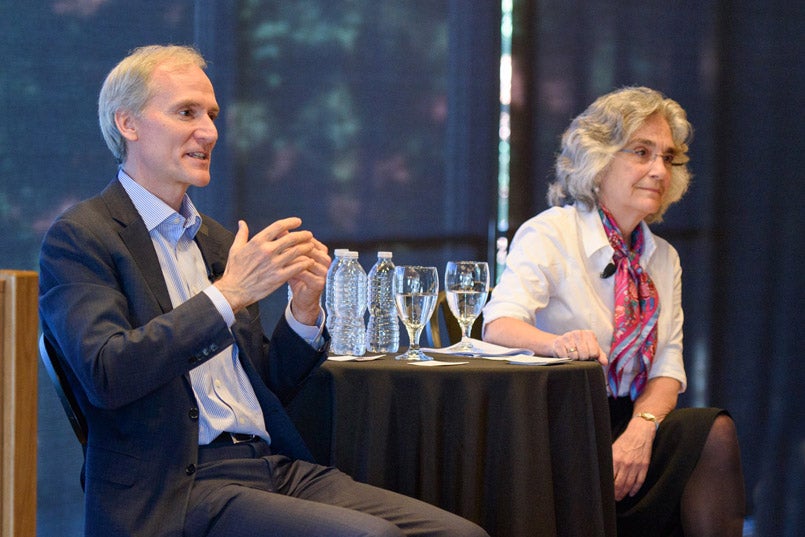December 13, 2017
Leveraging Stanford’s many strengths
The last decade has seen unprecedented growth in engineering interest among Stanford students. Between 2008 and last year, the number of students receiving an undergraduate degree in an engineering field jumped from 337 to 672, meaning the school now accounts for 39 percent of undergraduate degrees conferred at the university.
The primary driver: my own field of computer science, in which the number of undergraduate degrees jumped from 66 to 273 — a more than 300 percent increase! CS majors now comprise about 41 percent of all undergraduate engineering degrees conferred, and 16 percent of all undergraduate degrees across Stanford.
Naturally, growth at this scale creates challenges, including retaining enough outstanding faculty and lecturers to teach the courses, particularly in CS. Space is already at a premium, and it can be difficult to find places for instructors and teaching assistants to conduct office hours, or for undergraduates to collaborate and build their communities.
As we face the logistical challenges that come with growth, we also must acknowledge another issue: that Stanford could come to be perceived as primarily a university for aspiring engineers, rather than as a broadly excellent university offering our students opportunities to acquire deep knowledge in dozens of fields including the humanities, arts, and social and natural sciences.
Our strength across all of these fields is one of Stanford’s defining and perhaps even unique characteristics. No other institution of higher education has such breadth, along with such an entrepreneurial “no-barriers” philosophy. Students can — and do — work across disciplinary boundaries. But in the School of Engineering we must continuously ask ourselves: Are we doing enough to encourage and enable students to take full advantage of Stanford’s breadth of excellence?
Stanford students and our entire community are enriched when we nurture the myriad connections and relationships among the various disciplines and the individuals within them. The engineering students who take courses in other parts of the university gain critical new knowledge and a depth of understanding that informs their work and their lives. Courses in the arts, humanities, and social sciences equip engineering undergraduates with the tools and wisdom they need to be productive and successful members of society, and to bring this knowledge to bear on their own engineering projects.
With this in mind, we have begun to rethink the engineering curriculum so that our students will have the opportunity to take fuller advantage of all that Stanford has to offer, while also continuing to deepen their engineering knowledge. At the same time, we are exploring more ways for engineering students to apply their skills to other fields, including encouraging capstone projects in which engineering students bring their expertise to real-world challenges in collaboration with students from other fields.
Conversely, students throughout the university are recognizing that aspects of engineering increasingly touch every part of their lives, regardless of what major or career they pursue. So we are identifying ways for students from other parts of the university to apply to their own field critical concepts in engineering. Our goal is to create learning environments within Stanford Engineering that are welcoming to all students regardless of their primary interests or technical background.
As an example, recognizing a need for an introductory course covering the basics of data analysis and visualization, data mining, and machine learning, I recently developed CS 102: “Big Data — Tools and Techniques, Discoveries and Pitfalls,” aimed at non-CS undergraduate and graduate students. This fall I have 120 students from 33 fields of study. Some of these students are engineers, but many are not. They come from all seven of Stanford’s schools, with majors that include economics, East Asian studies, Earth systems, and English. These students bring insights and ideas from their own fields to enrich the class, while acquiring an understanding of data and computation that can inform their own learning and scholarship in new ways.
We can do even more to bring together students from throughout the university, and to encourage engineering students to participate in all that Stanford has to offer. We need to, because only by doing so will we foster a teaching and learning environment that truly leverages all of Stanford’s many strengths.
